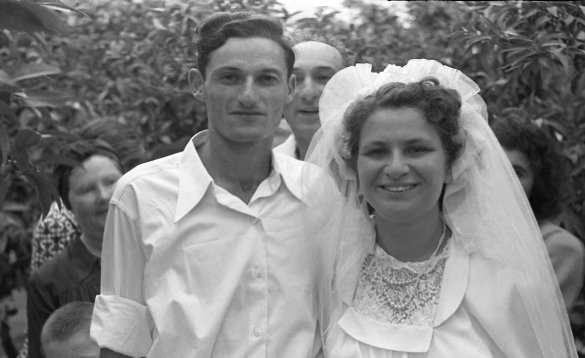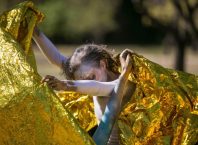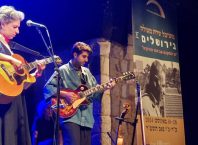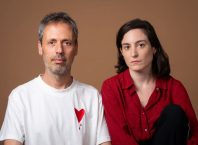Naftali Oppenheim (1912 – 1953) came to Israel in 1937 as a member of the Zionist youth movement HeHalutz, having participated in agriculture training to prepare him for a life of working the land. He also brought with him a camera and laboratory equipment. Oppenheim had been drawn to photography since his teens, even when economic circumstances forced him to quit high school in order to work, he took evening classes in photography. What began as a hobby was to become Oppenheim’s legacy.
During his first year in Israel, Oppenheim fell ill with polio, and could not return to physical labor. He took up his camera and began to work as a photographer, setting up a small studio in Kibbutz Ein Gev. Oppenheim traveled throughout the Jordan Valley taking pictures of everyday life: children, celebrations, people at work and play. A retrospective of Oppenheim’s photographs is currently shown in the exhibition Kinneret People at the Eretz Israel Museum, curated by Guy Raz.
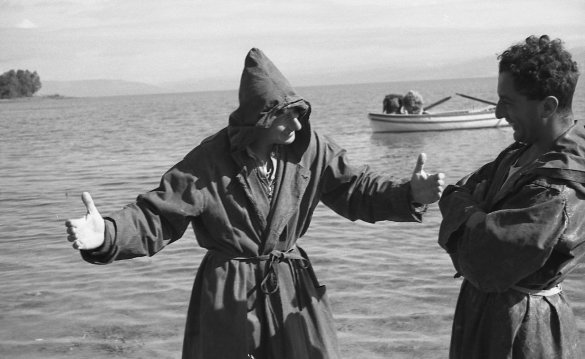
The photographs capture the feel of those times, whether they are posed wedding or graduation pictures, the photographic record of constructing a new settlement, or a fleeting moment – fishermen telling tall tales; children at play; David Ben Gurion taking a boat ride on the Kinneret with Teddy Kollek, who was at the time secretary of Kibbutz Ein Gev. One of those pictures, taken in Beit Yosef, is of my mother.
My mother, Pnina Tabak, is the small blonde girl seated in the center, her head slightly tilted to one side – a gesture she retains today, as may be seen in the video.

She was perhaps four years old when the picture was taken. Finding this photograph in the exhibit was a wonderful surprise – my mother had never seen this photo, and was too young to remember the event. Looking at the photograph, she can tell that it was taken a few years after Beit Yosef was first established ‘tower and stockade’ style by my grandfather, Zvi Elboim, with Nahum Cabiri and three other men. At first the five men lived in a tent within the wall, then, as she recalls more men joined to make a group of forty. At that point, they brought five of the women to take care of the domestic aspects of life. My grandmother Bracha was an excellent cook, so she and her two girls – my mother and her sister Rachel, joined the camp along with a few other women and children.
As Pnina recalls, this small group of children ran around the place like “wild animals,” so my grandfather traveled to the big city, and convinced a young woman named Drora from Givatayim to come to the settlement as a teacher. Drora is the woman in the dark dress, seated at the left side of the photograph. This photo is from a later period when Beit Yosef expanded beyond the original walls and families moved in with their children. The photographs shows all the children living in the settlement at that time, including her sister Rachel (peeking out from behind the other teacher’s shoulder), and friends Ruti and Yael Cabiri.
Yet this was not the only photograph that evoked memories and wonder as I visited the exhibition with my mother. A photograph of a young, handsome Leonard Bernstein on the Kinneret, reminded my mother of the thrill she experienced one day in Haifa. Walking down the street she saw a tall, handsome man, with a jaunty scarf at his neck. She recognized him as Leonard Bernstein, and she said, “I fell in love.”
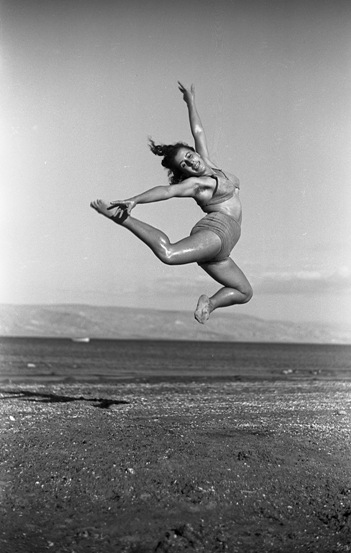
Oppenheim’s photographs reveal the rapport and appreciation he had for the life around him, as well as his talents as a photographer. His photographs of horses are stunning, and in each of his portraits you can see a life story. His photograph of dancer Lili Marian leaping in the air expresses her exuberance and beauty, as well as the ‘back to nature’ spirit of the times.
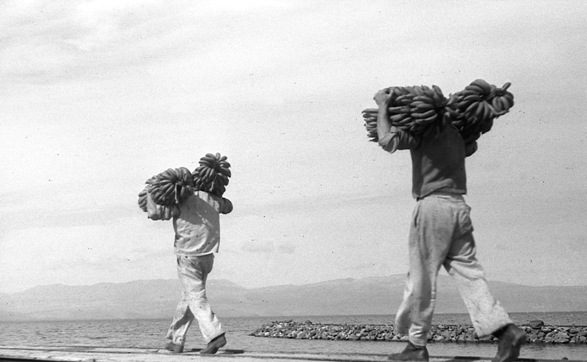
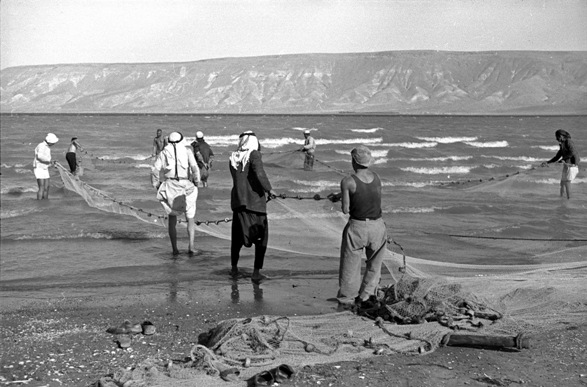
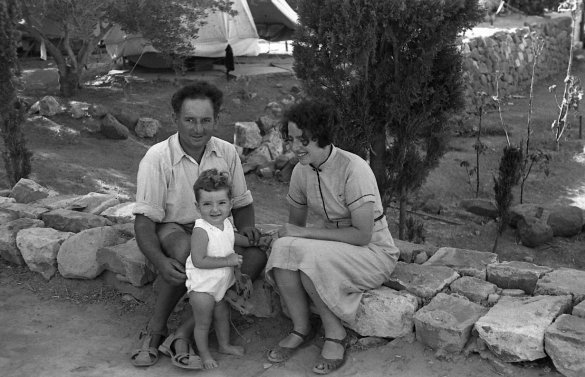
Oppenheim died a tragic and early death, he was accidentally shot in 1953 while on his way to take his turn at guard duty on the kibbutz. His legacy lives on in the photographs, all are infused with a warm and open look at the life around him. Kinneret People reflects a chapter in history: for some it will bring back memories, for others it is a way to gain insight into the days of the British Mandate in Israel, and the first years of statehood; history as seen on a human scale. Most of all, it is a photographic gem of an exhibit.
Kinneret People will be open until February 28, 2015. The exhibition is accompanied by a catalogue. Eretz Israel Museum, 2 Haim Levanon Street, Ramat Aviv, Tel Aviv. Opening hours and admission fees may be found on the Eretz Israel Museum website. More at the museum: Local Testimony/World Press Photo will be on exhibit until January 24, 2015

